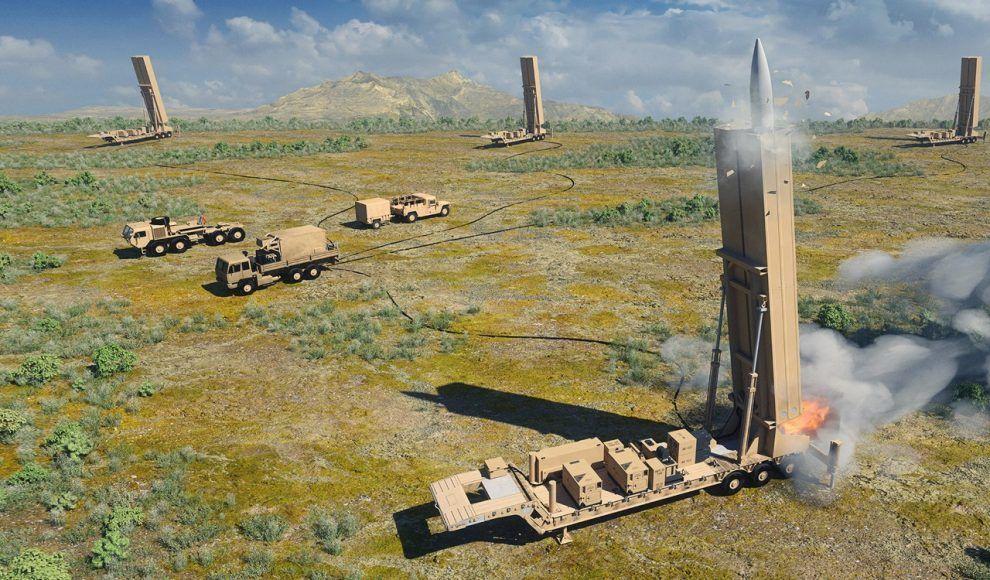Hypersonic arms race between China and the US What to expect?
The ongoing global geopolitical turmoil created many security gaps in different regions while boosting the arms race between the leading global powers like the United States, China, Russia, and India.
The war in the Gaza Strip between Israel and Hamas and the Russo-Ukraine war that erupted in 2022 triggered a diplomatic confrontation between the US-led geopolitical axis and the Russia-China duo. Although the US now imposes economic sanctions on Russia due to its war against Ukraine, its main concern is China, with its vast economic resources and rising soft power across the globe.
In terms of rising influence in Central Asia, the Middle East, West Africa, Southeastern Europe, and recently in the Caucasus region, Beijing is steadily becoming a “headache of the US” by overshadowing its presence in a wide geography. More recently, the US-China rivalry renewed as both countries put enormous efforts into developing hypersonic missile fields to maintain superiority over each other.
The main reason is that hypersonic weapons can reach at least Mach 5, or approximately 6,200 km per hour. Yet, while traditional long-range missiles, such as ballistic missiles, can reach similar speeds, hypersonic weapons can also fly at different altitudes and trajectories. When China’s DF-17 ballistic missile featured in a military parade in 2019, it became the first country in the world to publicly reveal a hypersonic weapon. China also recently announced it had made breakthroughs in heat-seeking technology for such weapons, which the US – having significantly increased funding for hypersonic research – has said it may not have until 2025.

In addition to the US and China, Russia also developed its own hypersonic missiles in recent years to counterbalance the Western hegemony. As such, it even used six of its hypersonic Kinzhal missiles in Ukraine in 2023, the largest number the country has deployed in one strike during the war. Other countries, including Australia, Iran, both North and South Korea, Brazil, Germany, Israel, India, and Japan, are developing hypersonic programs. However, the increase in funding and the tempo of the US program comes as relations between the US and China have been the worst they've been in decades.
Despite maintaining a leading role in this field, the US military hopes to raise funds with the retirement of older and expensive-to-maintain systems in favour of new systems, including hypersonic development programs. Moreover, some technical shortages and setbacks within the US military, particularly with the launcher and launch sequence of the new Long Range Hypersonic Weapon System, will keep the US Army from fielding its first LRHW battery until fiscal 2025. Earlier, the Army said it would field the first battery in fiscal year 2023 but admitted in September 2023 that it would miss that deadline.

The development of hypersonic weapons is as important as developing means of intercepting them during conventional warfare or surprise attacks. Therefore, since 2018, Russia, China, and the US have begun developing means to intercept hypersonic weapons. Unlike Russia and the US, the status of China’s development of means to intercept hypersonic weapons is unknown.
As for China, it officially announced in 2021 that it had conducted a test launch of a new hypersonic weapon capable of carrying a nuclear warhead. China is particularly interested in the rapid development of hypersonic weapons and defence technology to intercept them effectively in large-scale warfare. For many years, China has been seeking ways to counter US missile defence systems for decades; China has always felt that US missile defence systems undermine China's nuclear deterrence.
The successful implementation of a hypersonic weapons strategy will enable China to significantly strengthen its own security sphere. Hence, considering China’s successful hypersonics testing and the combative mood between Beijing and Washington, it’s reasonable to be concerned about the acceleration in both weapons development and hostile rhetoric.








